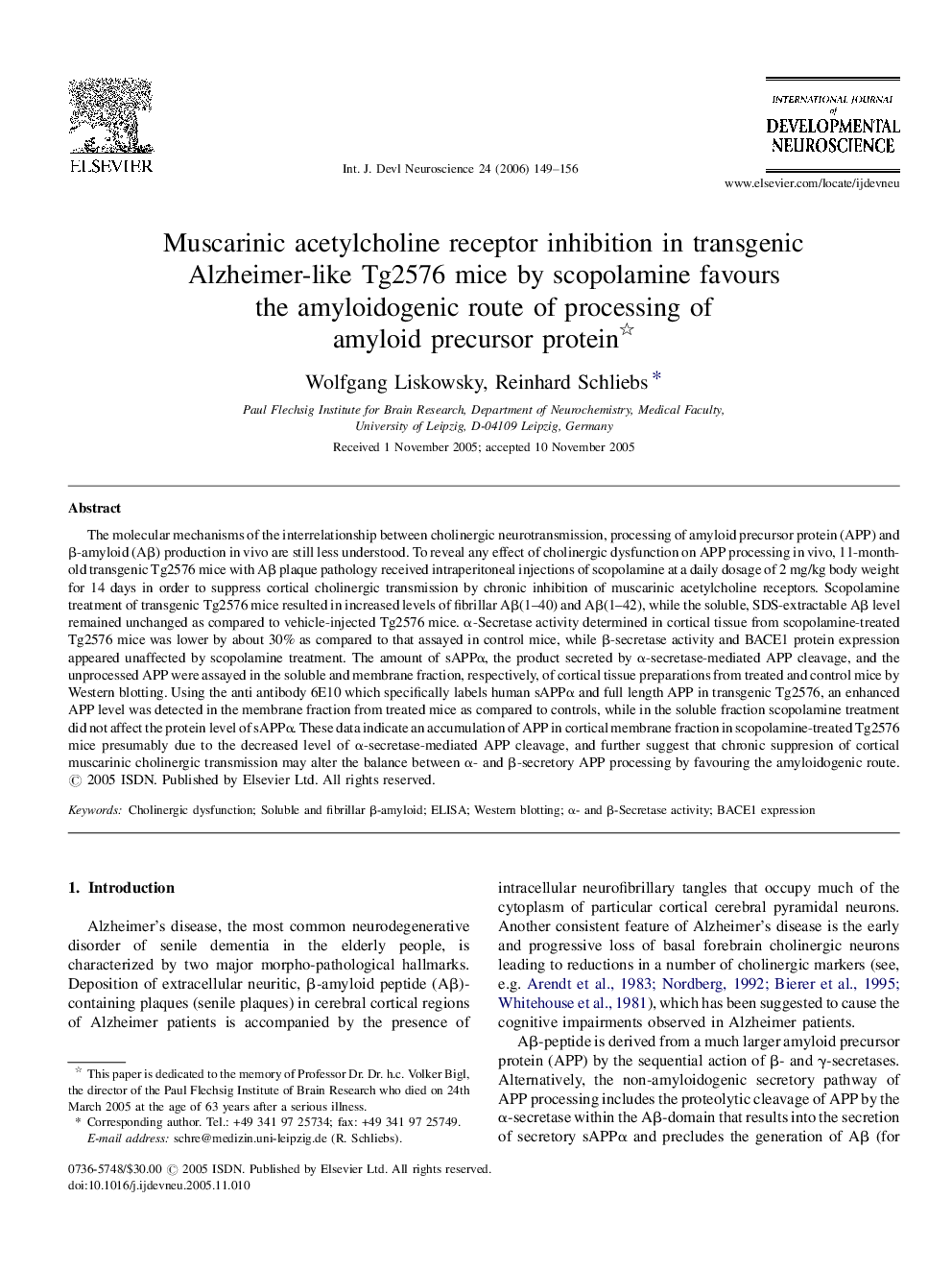| Article ID | Journal | Published Year | Pages | File Type |
|---|---|---|---|---|
| 2787171 | International Journal of Developmental Neuroscience | 2006 | 8 Pages |
The molecular mechanisms of the interrelationship between cholinergic neurotransmission, processing of amyloid precursor protein (APP) and β-amyloid (Aβ) production in vivo are still less understood. To reveal any effect of cholinergic dysfunction on APP processing in vivo, 11-month-old transgenic Tg2576 mice with Aβ plaque pathology received intraperitoneal injections of scopolamine at a daily dosage of 2 mg/kg body weight for 14 days in order to suppress cortical cholinergic transmission by chronic inhibition of muscarinic acetylcholine receptors. Scopolamine treatment of transgenic Tg2576 mice resulted in increased levels of fibrillar Aβ(1–40) and Aβ(1–42), while the soluble, SDS-extractable Aβ level remained unchanged as compared to vehicle-injected Tg2576 mice. α-Secretase activity determined in cortical tissue from scopolamine-treated Tg2576 mice was lower by about 30% as compared to that assayed in control mice, while β-secretase activity and BACE1 protein expression appeared unaffected by scopolamine treatment. The amount of sAPPα, the product secreted by α-secretase-mediated APP cleavage, and the unprocessed APP were assayed in the soluble and membrane fraction, respectively, of cortical tissue preparations from treated and control mice by Western blotting. Using the anti antibody 6E10 which specifically labels human sAPPα and full length APP in transgenic Tg2576, an enhanced APP level was detected in the membrane fraction from treated mice as compared to controls, while in the soluble fraction scopolamine treatment did not affect the protein level of sAPPα. These data indicate an accumulation of APP in cortical membrane fraction in scopolamine-treated Tg2576 mice presumably due to the decreased level of α-secretase-mediated APP cleavage, and further suggest that chronic suppresion of cortical muscarinic cholinergic transmission may alter the balance between α- and β-secretory APP processing by favouring the amyloidogenic route.
